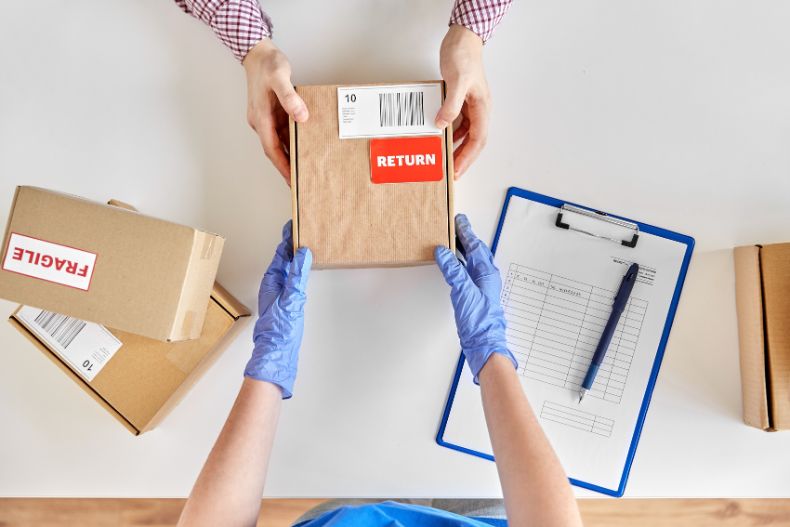Effective returns management is a vital part of a successful supply chain. Reverse logistics can be just as important as fulfillment, both for the customer and the business. Returns management should be cost-effective, efficient, and streamlined – below, we look into how you can achieve this in your business with best practices.

What is returns management?
Returns management is a part of the supply chain. It’s associated with reverse logistics, which is when goods will be returned to the retailer from the customer.
Returns management specifically is the processing of returns and also involves processes and policies that help to reduce the number of returns made. It will include collecting, inspecting, sorting and restocking returned items.
There can be many reasons why a customer needs to return their purchased item. It could be that the item wasn’t as advertised, it arrived damaged, the order arrived too late, the wrong order arrived, or the customer simply changed their mind.
Why is returns management important?
Returns management is important to get right. Bad returns management will result in high costs to the business, as well as poor customer experience and, therefore, poor customer retention.
In contrast, good returns management will save the business money and help to create a simple and streamlined process for the customer. It’s important that customers have an opportunity to return items in certain circumstances, such as receiving an incorrect or broken item, or if the item doesn’t fulfil what they need. The process should be quick and efficient, as this will encourage customers to buy from you again, safe in the knowledge that they can easily return items if needed.
Returns management should also aim to reduce the number of returns. When you have a robust returns policy in place, you can ensure that only acceptable items are returned and that relevant items can be reintroduced into the supply chain after inspection, so they can be resold. You can also identify where there may be problems in your supply chain, for example, if items are regularly being delivered broken, you may need to improve your packing process.
Best practices for your returns management
There are several ways you can improve the returns management in your logistics.
Take steps to reduce returns
The first thing you should do for your returns management is to try to reduce the number of returns. This will help to make the process much more efficient.
It will include making sure items are advertised correctly, to reduce the risk of the customer misunderstanding exactly what it is they’re buying. You should also ensure that only acceptable items are returned, so you should have a timeframe in which customers will need to process returns, and also make it clear if there are any items that you won’t be able to accept returns for.
Extra care should be taken to ensure orders are sent out accurately, with the correct items included. You will need to implement an effective quality control process along the packing line. Items should be packed in the correct packaging to ensure they travel safely.
Utilise technology to streamline returns management
The key to successful returns management is to streamline and simplify the process. Technology should be utilised to support this approach and can be incorporated into nearly every step.
You can use technology and automation to streamline processes such as accepting or rejecting return requests, and processing returns. Producing and printing return labels, tracking items, and processing accurate documentation can all be improved with the right technological support.
You can also use technology to support the customer with their returns process, giving them a tracking number and the ability to track where their return is and when they can expect their refund. This can help to improve employee bandwidth by reducing the number of requests from customers to find out where their return is.
Communicate with the customer
Creating a transparent returns management process is a must for good customer experience. Your returns policy should be communicated clearly, so customers know exactly when it will be appropriate to request a return and whether they can request an exchange or a refund.
It should also be clearly communicated how the customer can create a refund and the process should be simple for them. It might be that you include a returns label in the package, or you work with couriers who have drop-off points in local shops.
As mentioned, wherever possible you should give the customer autonomy to track their return. This will help to keep them involved in what’s happening and reduce the pressure on your employees to respond to requests from customers.
Increase capacity at peak times
You will likely already have increased capacity for fulfillment around peak times, such as Christmas. However, this should also extend to your returns management, especially in the times following the peak fulfillment periods.
Having extra capacity to help sort returns will improve individual employee bandwidth and prevent the entire process from slowing to a halt after peak times. You may also need to keep on extra drivers in your fleet to deal with increased reverse logistics.











